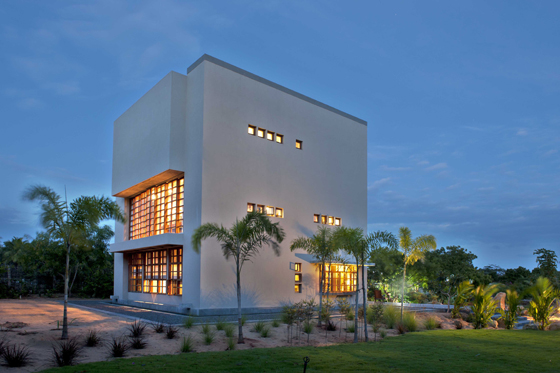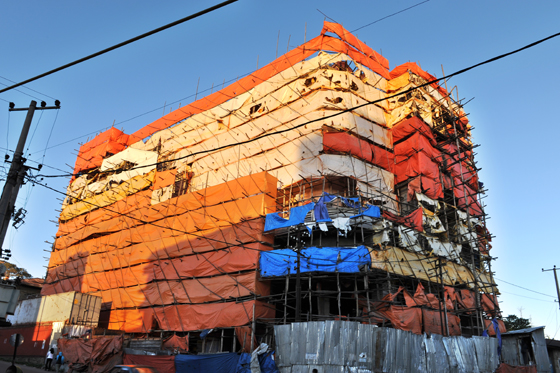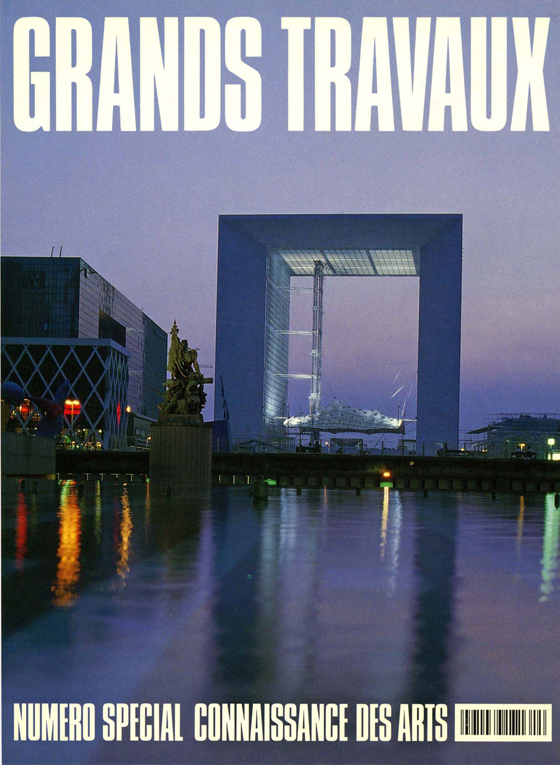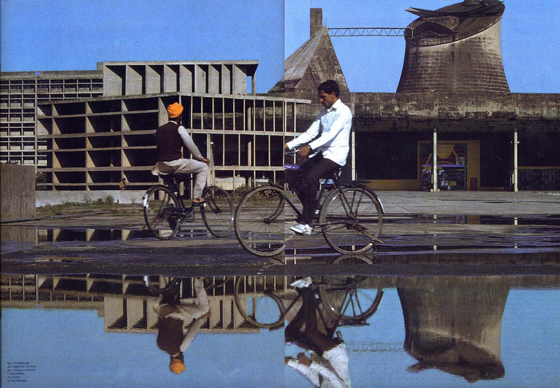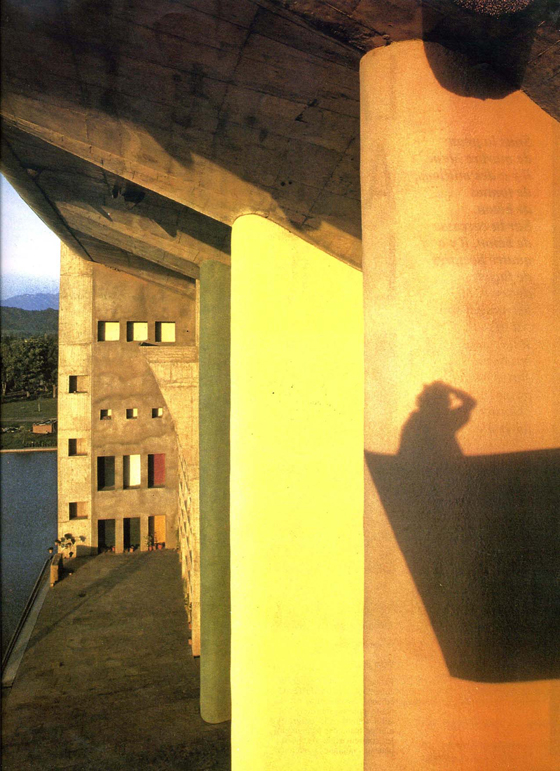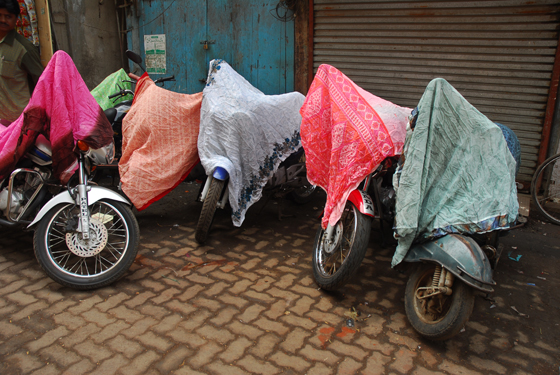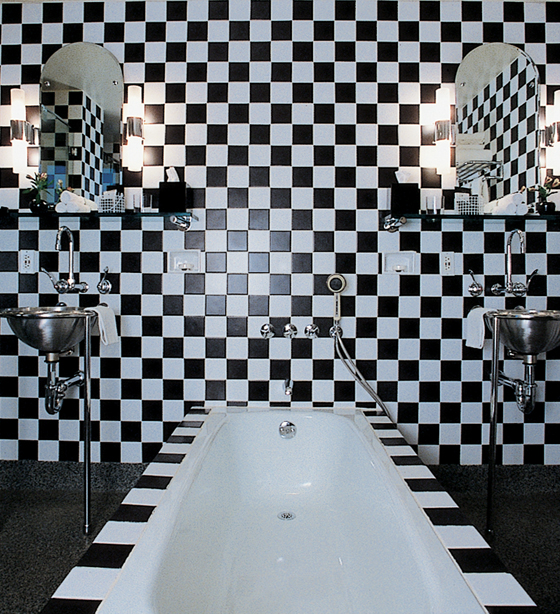Catch Her If You Can: Deidi von Schaewen
Texte par Simon Keane-Cowell
Zürich, Suisse
13.05.14
Respected architectural photographer Deidi von Schaewen isn't one for letting the grass grow under her feet. Active since the 1960s and with no sign of hanging up her camera any time soon, Architonic caught up with the peripatetic image-maker to talk the changing value of architectural photography, the advent of digital imagery, and her love of mud huts.
German architect Niels Schoenfelder's weekend house in Pondicherry, India
Deidi von Schaewen is going places. Literally.
The respected German architectural photographer and film-maker – who, for the last four decades has documented the built environment in all its creative richness and diversity – is, if her emails are anything to go by, constantly on the move. ‘I’m just about to fly out to Delhi’, she writes one day. ‘I’m leaving for Sri Lanka tomorrow’ a couple of days later.’ ‘I’m in Doha.’ ‘Chamonix today.’ ‘Have camera, will travel’ could be the motto of the Paris-based image-maker, whose ability to reveal new perspectives on the constructed world around us – the world over – has confirmed her status as one of the most compelling photographers working internationally.
Corrugated-iron-hut facades in Mauritania, one of von Schaewen's many studies in architectural typologies
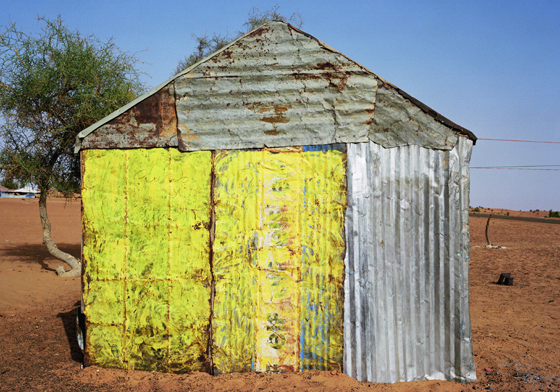
Corrugated-iron-hut facades in Mauritania, one of von Schaewen's many studies in architectural typologies
×Whether it’s a magazine commission, a book project or a self-initiated photographic series, von Schaewen, who has worked for the likes of The World of Interiors, Architectural Digest, Vogue, Elle Decoration and Taschen, puts the work in, researching her subject and its location in depth before she starts shooting. Her gaze ranges from the macro to the micro, photographing both iconic buildings by internationally acclaimed starchitects and small, vernacular structures across Asia and Africa. Detail is painstakingly captured, but not at the expense of something less intellectual: feeling. ‘There should be some emotion preserved,’ she explains.
One of von Schaewen’s many series is entitled ‘Reflections’, which is somewhat apt, given her fascination with creating visual records of sameness – her several studies of architectural typologies, such as huts and scaffolding, testifying to this. That said, no image is ever entirely the same and it’s perhaps this idea of the endless opportunity to explore the difference within specific building and other types that motivates, through its never-ending promise.
Architonic will be publishing some of von Schaewen’s recent work over the next few months in the form of a short series, but we start with an interview with the photographer, where she discusses how where she’s come from, where she’s heading, and the beauty of a mud hut.
Iconic architecture photographed for a raft of publications; Johan Otto von Spreckelsen's Grande Arche de la Défense, Paris (top), and Frank Gehry's Vitra Design Museum, Weil am Rhein (above)
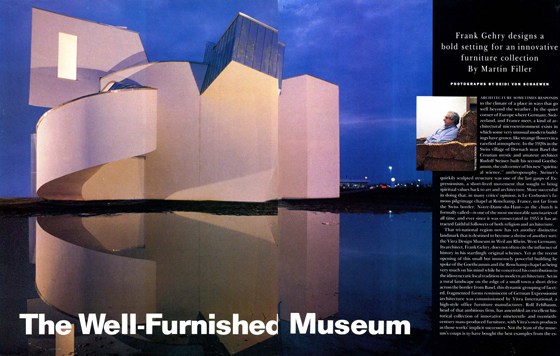
Iconic architecture photographed for a raft of publications; Johan Otto von Spreckelsen's Grande Arche de la Défense, Paris (top), and Frank Gehry's Vitra Design Museum, Weil am Rhein (above)
×....
You have a long and rich career. How did it start?
I thought of studying many different things – architecture, design, etc. But in the end, I chose painting and graphic design. My first job was working in Barcelona with the American architect Peter Harnden, doing the graphic design and the showcases for a pavilion at Expo 67 in Montreal.
Travelling to the south of Spain one day, I took some photographs of the new Xanadu apartment building by Ricardo Bofill, and subsequently showed them to him. Based on this, he asked me to photograph all his buildings, so I became an architectural photographer almost overnight for the then young architects of Barcelona – Bofill, Bohigas and Tusquets.
How has the profession changed over the intervening years?
Architecture has changed; there’s been the arrival of starchitecture. The architectural magazines have disappeared or changed. But digital photography and the possibilities of correcting images has been the major change and, of course, the advent of the ‘free’ use of pictures on internet.
How has your personal approach to photography changed over the years, if at all?
Digital photography has changed so much. You can work much faster, you can shoot more angles, you can shoot without a big budget, you can produce your work yourself more easily. And you can shoot more personal work without ruining yourself. You can also do films at the same time, but I don’t use still cameras, but, rather, video cameras.
Has the general value of architectural photography changed, do you think?
Architectural photography was for the specialist, for architects and the readers of architectural magazines. Now it is seen by a much larger audience via the internet. Some of the architectural photographs have also become ‘art’ and is shown in galleries. When is it architectural photography functional and when is it ‘art’? The boundaries are very flexible.
Colourful concealment in Mumbai (top) and Cairo (above)
What’s your process? How much research do you do in advance? Is this important to photographing architecture?
If I do a book, there is a lot of research involved. If you’re shooting a building, you need time to frame it in the best light possible. A visit before is very helpful, and I do a run-through with scouting shots.
What makes for good (and bad) architectural photography?
The most important thing is good architecture; you just then have to show it in the best way possible. How can you create a good picture of a shopping mall? It should still be photography, not a digitalised invention or something almost like an illustration, which is often the case these days. There should be some emotion preserved, even if you can never show the three dimensions or the reality of a building.
Prolific French designer Andrée Putman's interiors captured by von Schaewen
What have been your favourite projects to work on?
The books ‘Interiors of India’ and ‘Inside Africa’ for Taschen. In both cases, I have tried to cover everything, from the mud huts (my favourite architecture) to the most modern architecture and interiors. I have focused a lot on vernacular architecture and have been working a project on this for some time now.
Where would you like to go that you haven’t been and what would you like to shoot that you have yet to?
I am working on several books, some of them personal books. There will hopefully be further travels to India, Sumatra, Saudi Arabia, Algeria, among other places for certain projects. I would love to go back to several countries in Africa and to Yemen (but the latter is impossible right now), and to Peru for the first time.
Deidi von Schaewen: 'There should be some emotion preserved, even if you can never show the three dimensions or the reality of a building'

Deidi von Schaewen: 'There should be some emotion preserved, even if you can never show the three dimensions or the reality of a building'
×....
Look for a new series on Architonic of Deidi's unique work – coming soon
